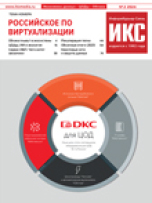| Рубрикатор |  |
 |
| Все новости |  |
World News |  |
 |
The true cost of an LTE network is...
| 01 октября 2009 |
These are hard questions that have yet to be answered, despite the technical machismo of the network vendors in hailing the latest advances in LTE technology. But one network consultancy – Aircom International - has had a stab at coming up with some answers.
Margaret Rice-Jones, CEO, told Mobile Europe that Aircom felt that the market needed a bracing cold slap to the face from a fistful of hard cash. Well, sort of: what she actually said was “the technical debate on LTE needs to be balanced with commercial reality”. But I think we can see what she was getting at.
“The business case to roll out the technology, all the license bids and other associated costs – that side of things is not being talked about enough,” she said, in case she hadn’t made her point.
So Aircom has put its knowledge of operator networks together and come up with a tool, called the LTE Cost Calculator, to help operators understand and break down the costs of an LTE rollout.
The headline number is that a Tier 1 operator in Europe would have to spend $880 million - assuming a plan to cover three major conurbations in the first year, update the backhaul network, and meet all other associated costs.
Rice-Jones said that Aircom had not gone for an aggressive rollout scenario in an effort to come up with as big a number as possible. And there are still some unknowables in there, such as what spectrum might eventually cost, what price point the equipment vendors will allow themselves to be beaten down to, and even how much network sharing the operators themselves might be up for.
Another variable will be the time of launch – will operators go for the first mover advantage with the later upgrade costs they will inevitably face? Or will they go with more mature releases, but risk ceding a year or two to the operator that launches first?
Whatever the variables, it’s still a bracingly large number, especially if you multiply it by three or four times (the number of UK operators) and then think that most of them will be heading to the same polished board tables in the City to ask for funding.
So, what can operators do to reduce the capital and operational cost of LTE? Well, network sharing is one thing. Rice-Jones estimated that Orange-T-Mobile would have a 15-18% cost advantage by just having one network to deploy. O2 and Vodafone, who have committed to sharing passive network elements in 2 and 3G, could also extract similar savings.
A slightly different expression of this came from CapGemini, who told us that operators with moderate coverage could achieve an EBITDA increase of 1-1.4%, depending on the level of coverage – through network sharing.
CapGemini also figured that operators could put 1.8% on their EBITDA by building out their own backhaul network, reducing their reliance on leasing backhaul transmission. At the moment, operators on average spend about 65% of their backhaul opex on leased lines, even though these lease lines only carry about 35% of their backhaul capacity. Rice-Jones agreed that operators would probably move to use more fibre - pointing out that there is still a large amount of unlit fibre around.
Another critical element of the rollout will be the use of SON (Self Organising Networks) to configure the network automatically. Rice-Jones said that the civil works of a RAN rollout can account for 50% of the cost. Having automated tools to configure and align the antennas and equipment correctly will be crucial – as will collaborating and sharing equipment with other operators where possible.
Источник: Mobile Europe
Читайте также:
Опубликован перечень поручений по итогам заседания Совета по стратегическому развитию и нацпроектам
Сингапур готовится к отключению связи 3G
Решения N3COM прошли тестирование на сети LTE ОАО «РЖД»
МТС начинает отключать старые сети 3G
билайн завершил масштабную модернизацию сети в Московской области

















Оставить свой комментарий:
Комментарии по материалу
Данный материал еще не комментировался.